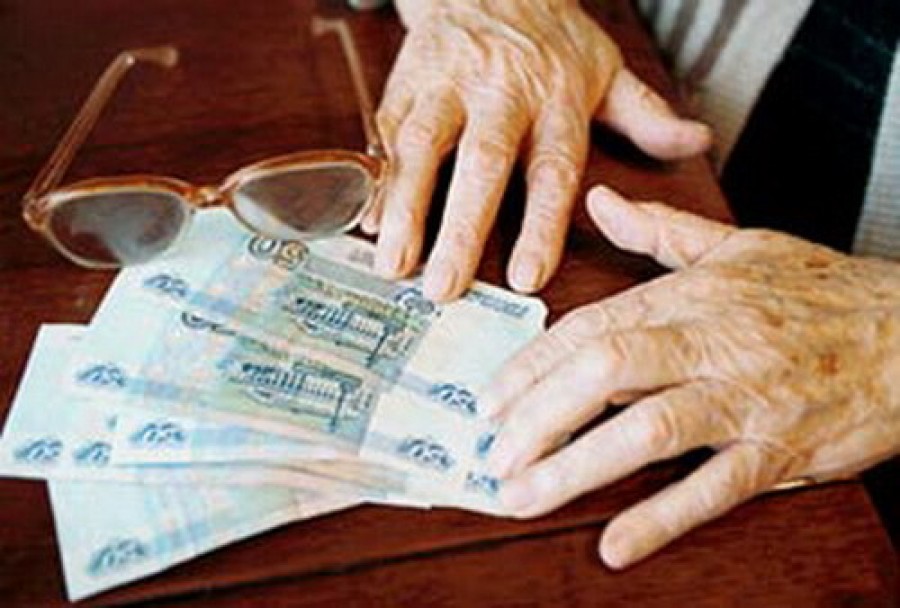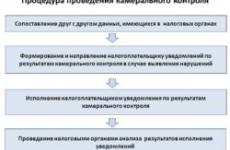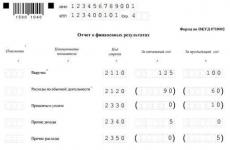Tax deduction for pension contributions is two points. Social deduction for pension savings
The Tax Code of the Russian Federation establishes the right of a natural person taxpayer to receive a tax deduction on contributions paid under pension agreements, voluntary pension insurance or voluntary life insurance (). We will understand what expenses you can get a deduction for, what documents you need to prepare for this, in what time frame and where to apply.
What costs can I get a deduction
You can also deduct the costs of paying insurance premiums under a voluntary pension insurance contract with an insurance organization ().
Since January 1, 2015, another type of expenses that are allowed to be deductible has appeared - these are contributions paid under voluntary life insurance contracts concluded with an insurance organization for a period of at least five years (,). The changes came into force on January 1 of the current year, which means that it is already possible to declare the costs incurred in 2014 to the deduction.
In addition to contributions under insurance and pension agreements for deduction, you can accept and pay additional insurance contributions for the funded part of the labor pension ().
Who can be insured?
First of all, the insured person can be the taxpayer himself. But in practice there are also cases when the insurance contract is concluded for the taxpayer, and the insured person is someone else. And even in such cases, you can qualify for a deduction if the insured are family members or close relatives of the taxpayer, and he pays for them insurance premiums for his own account. Recall that, in accordance with the Family Code of the Russian Federation, family members and close relatives include:
- spouse;
- children, including adopted children;
- parents, including adoptive parents;
- grandparents;
- grandchildren;
- brothers and sisters, including the half ().
Also, the insured person may be a disabled child under guardianship or trusteeship ().
How much is the deduction
An insurance or pension agreement may be concluded for any amount, but you can deduct only the amount of insurance premiums paid for the year in the actual amount, but not more than 120 thousand rubles. It should be borne in mind that this is the maximum amount that a taxpayer can claim for all social tax deductions in the aggregate (). That is, for example, if during the reporting year he had already received a tax deduction in the amount of 50 thousand of expenses incurred, then he could claim no more than 70 thousand rubles to deduct pension insurance. In this case, if the application for deduction is approved, the tax inspectorate will return 13% of the stated amount.
EXAMPLE
EXAMPLE 1
In 2014, Khokholkova A.A. paid insurance premiums under the contract of voluntary pension insurance in the amount of 80 thousand rubles. She does not intend to state any other deductions.
Thus, she will be able to receive a tax deduction in the amount of 10.4 thousand rubles.
80 thousand rubles x 13% = 10.4 thousand rubles.
EXAMPLE 2
In 2014, Semenov S.S. paid additional insurance premiums for the funded part of the labor pension in the amount of 50 thousand rubles. In addition, he declared deductible training costs in the amount of 60 thousand rubles. and treatment costs in the amount of 20 thousand rubles.
50 thousand rubles + 60 thousand rubles. + 20 thousand rubles. = 130 thousand rubles. - the total amount of expenses incurred by taxpayers in the reporting year.
Since a tax deduction is not an obligation, but a taxpayer’s right, he can independently choose in what amount (not exceeding the established limit of 120 thousand rubles) and for which items of expenses to apply for the provision of deductions.
Semenov S.S. decided to deduct the costs of training and treatment in full, and the costs of pension contributions - in the amount of 40 thousand rubles.
The total amount that Semenov S.S. will receive a deduction, will be 15.6 thousand rubles.
(40 thousand rubles. + 60 thousand rubles. + 20 thousand rubles.) X 13% = 15.6 thousand rubles.
How to get a tax deduction
According to the Tax Code of the Russian Federation, to receive a tax deduction, you must submit a completed tax return in the form 3-NDFL and copies of documents confirming the expenses incurred (,).
The tax return form can be downloaded from (the “Forms” section), from the official website of the Federal Tax Service of Russia or obtained free of charge from the tax inspectorate ().
IT IS IMPORTANT TO KNOW
The basic rules for completing the 3-NDFL declaration (Appendix No. 2 "" to the order of the Federal Tax Service of Russia of December 24, 2014 No. ММВ-7-11 / [email protected]).
1
You can fill in the declaration in three ways: by hand on an already printed form, on a computer with a subsequent printout, or with the help of a specialized service on the website of the Federal Tax Service of Russia. In the latter case, it is not necessary to print out the declaration, it can be sent to the tax inspectorate through a personal account on the department's website (to work in a personal account, you must obtain a login and password in the inspection).
2
All cost indicators in the declaration are filled out with an indication of kopecks, except for the amounts of income received outside of Russia.
3
When filling out the declaration by hand, the information in the text fields must be entered from left to right in capital block letters. Numeric indicators are also filled in from left to right. In the absence of any indicators in all cells are dashed. If there are more free cells in the field than digits, then dashes are also put in them.
4
When filling out the declaration on the computer, the numerical indicators are aligned to the right. Allowed the absence of dashes in the empty cells.
5
Only filled pages of the declaration are numbered. For single-digit and two-digit page numbers, “0” is put in front (for example, the first page is “001”, the 10th page is “010”).
6
It is impossible to make corrections to the declaration.
7
The barcode in the upper left corner of each page of the declaration must be free from damage and deformation.
8
Declaration sheets are not stapled by stapler.
9
The declaration is printed only on one side of the sheet, duplex printing is not allowed. Printer ink should only be blue or black. Similarly with the color of the pen when filling out the declaration by hand.
The taxpayer may submit a declaration of deduction at any time within three years after the end of the year in which the expenses were incurred. For example, if contributions were paid in 2014, then you can submit a declaration before January 1, 2018.
ATTENTION!
If only deductions are stated in the tax return, then the deadlines for filing it are limited to three years after the reporting period. However, if the taxpayer simultaneously with deductions indicates taxable income, such a declaration must be submitted by April 30 of the year following the year in which the income was received. Otherwise, you will have to pay a penalty for failure to submit a declaration in the amount of 5% of the tax amount for each full or incomplete month of delay, but not more than 30% of the specified amount and not less than 1 thousand rubles. ()
You can submit a declaration to the tax office at the place of permanent registration. If the taxpayer does not have a residence permit, he can file a declaration at the place of temporary registration (,) It is submitted in one of the following ways:
- in paper form personally;
- in paper form by mail with an inventory of attachments;
- in paper form through a legal or authorized representative (in the latter case, a notarized power of attorney is required) ();
- via electronic communication channels (through a personal account at the Federal Tax Service of Russia, to work in which it is necessary to receive a login and password in the inspection at the place of registration).
The tax office may not accept the declaration for the following reasons:
- the taxpayer (or legal (authorized) representative) did not present a passport during a personal visit to the tax inspectorate;
- in the declaration there are no signatures and / or name of the taxpayer on all completed sheets in the designated places;
- the declaration is submitted in obsolete or unidentified form;
- the declaration is submitted to the wrong inspection (for example, to an inspection specializing in registration).
TIP
The RF Tax Code does not limit the number of tax returns filed, so you can submit, for example, one declaration until April 30 for income received, and then collect documents and submit another declaration for the provision of the deduction. However, we still recommend submitting one declaration of income and deduction so that you do not have to overpay the tax first and then return it from the budget.
Along with the declaration, the taxpayer must submit to the tax and documents confirming the expenses incurred. The RF Tax Code does not directly establish a list of such documents, however, the Ministry of Finance of Russia and the Federal Tax Service of Russia in their letters provide detailed explanations on this issue (letter of the Federal Tax Service of Russia dated May 5, 2008, No. ShS-6-3 / [email protected] ""). So, when submitting a declaration you should submit:
- a copy of the contract concluded in the name of the taxpayer with an insurance organization or APF or a copy of the insurance policy;
- copies of payment documents confirming the payment of contributions (for example, cash register check, payment order, payment order, receipt of payment);
- documents confirming the degree of kinship (if the insured person is not the taxpayer himself) - marriage certificate, birth certificate of the child (if the insured person is the taxpayer’s child), taxpayer’s birth certificate (if the insured person is the taxpayer's parent);
- a certificate confirming the child’s disability (if the insured person is a disabled child);
- certificate 2-NDFL on income received for the period (calendar year) when payments were made. This certificate can be obtained in the accounting department from the employer.
ATTENTION!
When submitting the documents and the declaration in person or through a representative, you must have the originals of the documents to be transferred to verify the enclosed copies by the tax inspector.
Along with the declaration and supporting documents, an application for the provision of a tax deduction is also submitted in two copies. It indicates the basis for the deduction and the list of documents attached to the declaration. The second copy of the application must be certified by the tax inspectorate with his signature of acceptance and put a date on it - this document remains with the taxpayer and can subsequently confirm the fact of filing the application, tax declaration and documents attached to it.
After receiving the declaration and documents confirming the expenses incurred, the tax inspectorate conducts an on-site audit, the duration of which may not exceed three months (), by the results of which it makes a decision on granting or refusing to provide tax deductions ().
Another document that must be submitted to the tax office is an application for the return of overpaid amounts of personal income tax. The form of this statement is arbitrary, but in its text it is necessary to indicate the details of the bank account to which the tax inspectorate will be able to transfer funds. You can submit an application either together with a declaration, or after the inspection has made a decision on the payment of deductions. In accordance with the law, the inspectorate must return tax on such an application no later than one month from the date of its filing (). But even if you apply for a refund along with a declaration, you still have to wait for the end of the desk audit. The only plus in this case is that you will not have to come to the tax office again to submit an application after the inspection has made a decision to return the tax.
How to get a deduction from an employer
Unlike deductions for education and treatment, deductions for insurance can be obtained through the employer, and in the same period in which contributions are paid. The only condition is that the employer himself must deduct insurance premiums from the taxpayer’s salary, acting as a tax agent. Recall that in order for an employer to become a tax agent, an employee must write a corresponding application in an arbitrary form with a request to deduct contributions from his salary with a certain periodicity in the specified amount (part 2 of article 5 of the Federal Law of April 30, 2008 No. 56- FZ ""). From the next month after submitting such an application, the employer will begin to deduct contributions.
Blanks
And in order to receive a deduction on the paid contributions, you also need to submit to the accounting department a statement of arbitrary form in the name of the employer and a copy of the contract concluded with the insurance organization or the APF (,). In the case of applying to the employer for the provision of the specified social tax deduction is not from the first month of the tax period, the deduction is provided monthly, starting from the month in which the taxpayer applied for it (). For example, if an employee submitted an application in March, he will be able to receive deductions starting from March.
Since 2010, the employer has the right to provide a social deduction on personal income tax to employees who have entered into non-state pension agreements with private pension funds.
A non-state pension agreement is an agreement between the respective fund and its contributor. On the basis of this agreement, the investor undertakes to pay pension contributions to the non-state pension fund (NPF), and the latter undertakes to pay the non-state pension to the participant (participants) of the fund (Article 3 of the Federal Law of 07.05.98 No. 75-ФЗ). According to the contract, the contributor in favor of the participant is entitled to be not only the organization, but also its employee, and both the employee and his family members — the spouse (s), parents (including adoptive parents), disabled children (including adopted) under guardianship (trusteeship).
An employee who has entered into a non-state pension contract has the right to appeal to the employer with a request to deduct pension contributions from payments in his favor (for example, from wages) and transfer them to the NPF. At the same time, this employee may receive from the employer a social tax deduction in the amount of pension contributions withheld and paid in the tax period.
When an employer can provide a deduction
The organization in respect of income paid to employees is recognized as a tax agent for personal income tax. This follows from paragraph 1 of article. 226 of the Tax Code of the Russian Federation. Therefore, it is obliged to calculate, withhold from their incomes and pay to the budget the amount of tax on personal income. For income that is subject to personal income tax at the rate established by paragraph 1 of Art. 224 of the Tax Code of the Russian Federation (13%), the tax base is defined as the monetary expression of such income subject to taxation, reduced by the amount of tax deductions provided for by Art. 218 - 221 of the Tax Code of the Russian Federation. This is indicated in paragraph 3 of Art. 210 of the Tax Code of the Russian Federation.
One of these deductions is a social tax deduction in the amount of pension contributions paid by the taxpayer in the tax period under the contract (s) of non-state pension security and (or) insurance contributions under the contract (s) of voluntary pension insurance RF). Moreover, the taxpayer may conclude such agreements with a non-state pension fund (insurance organization):
- in their favor and (or) in favor of the spouse (in favor of the widow, widower);
- parents (including adoptive parents);
- disabled children (including adopted children under guardianship (trusteeship)).
From 2010, a deduction on expenditures on non-state pension benefits and (or) voluntary pension insurance may be provided by a tax agent (employer). The basis is paragraph 2 of paragraph 2 of Art. 219 of the Tax Code of the Russian Federation, introduced by Federal Law No. 202-FZ of July 19, 2009 (hereinafter referred to as Law No. 202-ФЗ). Previously, this deduction was provided only by the tax authority at the end of the tax period when the taxpayer filed a declaration on the 3-NDFL form and the relevant supporting documents. Thus, from this year the named tax deduction can be provided to the taxpayer until the end of the tax period when it is addressed to the employer.
The employer has the right to provide the employee (taxpayer) with a social tax deduction for expenses on the payment of contributions to the NPF if the following conditions are met:
- in the presence of an appropriate statement from the employee and documents confirming his actual expenses for the specified purposes;
- if the amounts of the named insurance premiums were deducted by the employer from the payments in favor of the employee and are listed in the NPF in accordance with the contract (s) of non-state pension provision and (or) voluntary pension insurance. However, to receive from the employer a social tax deduction provided for in subparagraph 4 of paragraph 1 of Art. 219 of the Tax Code, the taxpayer will not be able, if he paid the pension (insurance) contributions on his own. In this situation, for the provision of the specified deduction, he should contact the tax authority at the end of the tax period.
As already noted, the taxpayer has the right to conclude the above agreements with the NPF and with the insurance organization, both for their own benefit and for the benefit of the spouse (including the widow, widower), parents (including adoptive parents), disabled children (including number of adopted children under guardianship (trusteeship)). Therefore, it may happen that not one but several agreements of non-state pension provision (voluntary pension insurance) will be executed for it. In such a situation, the considered deduction is provided in the amount of actual expenses incurred. However, in aggregate with other social tax deductions, it cannot exceed 120,000 rubles in the tax period. (paragraph 3, paragraph 2 of article 219 of the Tax Code). To obtain a deduction from the employer, the taxpayer should submit a statement.
Supporting documents
As noted above, an employer can provide an employee with a social tax deduction provided for in subparagraph 4 of paragraph 1 of art. 219 of the Tax Code of the Russian Federation, only if certain conditions are met: if the amounts of contributions under the contract of non-state pension provision (voluntary pension insurance) were deducted from payments in favor of the employee and are listed in the NPF (insurance organization). Therefore, the employer must have a non-state pension agreement (voluntary pension insurance) or a copy thereof, as well as the following documents:
- a taxpayer's application containing a request to deduct and transfer pension (insurance) contributions from payments in its favor in accordance with the relevant agreements;
- orders, settlement or payroll, confirming the fact of withholding of contributions;
- receipts on payment of contributions, payment orders for their transfer, bank statements from the current account, indicating actual transfer of contributions to the NPF (insurance organization). In addition, it may be extracts from the registers attached to payment orders, indicating the information on a particular depositor and the amounts of contributions transferred on his behalf in the relevant tax period (if contributions are transferred by the organization for several employees by one payment order);
- an extract from the nominal tax account of the taxpayer. The statement must contain: F. I. O. of the taxpayer and the amount of contributions paid under the relevant agreement during the tax period;
- documents certifying the employee's kinship with individuals in whose favor pension (insurance) contributions are paid (marriage, birth, death, disability and adoption certificates, decree on the appointment of guardianship (guardianship));
- copy of the license of non-state pension fund (insurance organization). This document is not needed in cases where the reference to the details of the license is contained in the contract of non-state pension provision (voluntary pension insurance), concluded by the taxpayer with the NPF (insurance organization).
A tentative list of documents that an employer must have in order to legally provide an employee with a social tax deduction on expenditures on the payment of contributions to APFs is given in letters of the RF Ministry of Finance of August 13, 2010 No. 03-04-06 / 7-176 and of August 6, 2010 No. 03 -04-06 / 7-168.
The provision that the employee is obliged to submit to the employer also a certificate from the tax authority about the receipt (non-receipt) of the social tax deduction is not contained in the RF Tax Code. After all, the tax authority provides the taxpayer with social tax deductions after the end of the tax period when filing a declaration, and the employer - until the end of the specified period. This is mentioned in the Letter of the Financial Department dated August 13, 2010 No. 03-04-06 / 7-176.
Periodic deduction
The tax agent (employer) calculates the amount of personal income tax on an accrual basis from the beginning of the tax period for the end of each month. He does this in relation to all incomes that are subject to personal income tax at a rate of 13% and are accrued to the taxpayer for the period, offsetting the amount of personal income tax (para. 3 of Art. 226 of the RF Tax Code) deducted in previous months. If an employer withholds pension (insurance) contributions monthly from the employee’s payments and transfers them to the NPF (insurance organization), then the tax base should be reduced by the amount of social deduction for non-state pension benefits (voluntary pension insurance) on a monthly basis. This feature is noted in the letters of the Ministry of Finance of 06.08.10 No. 03-04-06 / 7-168 and of 08.07.10 No. 03-04-06 / 7142.
Often for the provision of social tax deduction provided for in subparagraph 4 of paragraph 1 of Art. 219 of the Tax Code of the Russian Federation, employees are not applying from the first month of the tax period. In this case, the deduction should be provided starting from the month in which the taxpayer applied for his receipt to the employer with all necessary supporting documents attached (Letter of the Ministry of Finance of the Russian Federation of September 15, 2010 No. 03-04-06 / 6-216).
Size deduction
In the tax period, the employer has the right to provide a deduction for expenses on payment of pension (insurance) contributions in the amount of actually incurred expenses for non-state pension provision (voluntary pension insurance), but not more than 120,000 rubles. in year. This limit value is determined in conjunction with the amounts of other social tax deductions specified in sub. 2 - 5 p. 1, Art. 219 of the Tax Code of the Russian Federation.
Suppose a taxpayer in one tax period made expenses for training, treatment, payment of contributions under the contract for non-state pension provision. In addition, he paid contributions under the contract (agreements) for voluntary pension insurance, as well as additional insurance contributions for the funded part of the labor pension in accordance with Federal Law of April 30, 2008 No. 56-ФЗ. In such a situation, the taxpayer chooses which types of expenses and in what amounts are taken into account within the maximum social tax deduction (120,000 rubles for the tax period). This is stated in paragraph 3 of Section 2 of Art. 219 of the Tax Code of the Russian Federation.
It should be borne in mind that if in the tax period the amount of expenses for the payment of contributions under the contract (s) with the APF (insurance company) reaches the maximum value (120,000 rubles), then the provision of the corresponding deduction by the employer ceases.
It is necessary to take into account that of all types of social tax deductions an employer as a tax agent can provide an employee only a deduction in the amount withheld from payments in favor of the specified employee and contributions paid in the tax period under the agreement (s) of non-state pension provision (voluntary pension insurance).
- copies of contracts with NPF;
- copy of marriage certificate;
- an application for the provision in 2010 of a social tax deduction in the amount of the amount of pension contributions paid under two contracts - 120,000 rubles.
In 2010, the organization deducts payments in favor of Pribitkov and payment of pension contributions each month in the total amount of 14,000 rubles. (7000 rubles. + 7000 rubles.). Therefore, the organization monthly reduces the personal income tax base, calculated in relation to Pribytkova, to the social tax deduction for non-state pension benefits in the amount of 14,000 rubles.
In September 2010, the amount of these expenses reached 126,000 rubles. (14 000 rub.: Months x 9 months). This means that this month, for the last time during the tax period of 2010, the organization will provide Pribitkov with a social tax deduction, but not 14,000 rubles. a month, as before, but only 8,000 rubles. (120,000 rubles. - 14,000 rubles. / Month. X 8 months.).
Suppose an employee has incurred expenses for training, medical services, for the payment of additional insurance contributions to the funded part of the labor pension and intends to receive a deduction for them from the tax authority. Then in a statement to the employer about the provision of social tax deduction in the amount of contributions under the contract of non-state pension provision and (or) under the contract of voluntary pension insurance, he can specify any amount of deduction not exceeding 120,000 rubles. for the tax period. Similar clarifications are given in the Letter of the Ministry of Finance of the Russian Federation of September 15, 2010 No. 03-04-06 / 6-212.
Pribytkova's expenses on the payment of pension contributions under non-state pension agreements in favor of themselves and the spouses exceeded 45,000 rubles. already in April 2010. This month, for the last time in the tax period of 2010, the organization provided the employee with a social tax deduction. The deduction amount is 3,000 rubles. (45,000 rubles. - 14,000 rubles. / Month. X 3 months.), And not as before - 14,000 rubles. per month.
Valery Soloviev, Advisor to the State Civil Service of the Russian Federation, Class II
An employee can influence his pension in several ways. For example, he may additionally contribute funds to the funded part of the labor pension, in addition to those that the employer withholds from his salary and sends to the Pension Fund. He can also conclude a non-state pension agreement with a private pension fund or pension insurance with an insurance organization. In addition, if you take care of the deduction, you can save on taxes - retirement amounts will reduce the income taxed by the personal income tax.
When can I get a pension deduction?
There are two types of "pension" deductions. The first is a deduction on the amount of contributions under contracts concluded for the purpose of forming pension capital. Such an agreement can be a voluntary pension agreement (if it was concluded with a non-state fund) or a voluntary pension insurance agreement - both can be concluded not only in their own favor, but also in favor of the spouse, parents and children with disabilities (as relatives and reception). The second is a deduction for the amount of contributions that the taxpayer transfers to the funded part of the labor pension independently.
Deductions for the amounts that the taxpayer spends on the formation of their pension capital are social. The sum of all social deductions (education, treatment and "pension" contributions) is limited: the taxpayer will not be able to get more than 120 thousand rubles for them. per year, and this is on condition that he did not apply for other deductions. This restriction does not apply to every category, but to the total amount of expenses in all four.
If the "pension" deduction in the current year is not fully utilized, then the rest of the year will not transfer its balance.
Deductions for voluntary pension and insurance contributions
"Pension" deduction can be provided by both the tax authority and the employer at the request of the taxpayer (this opportunity appeared from January 1 of the current year, after making the appropriate amendments to the Tax Code). Of course, it is easier to get it through the employer - firstly, in recent years, many citizens enter into contracts with non-state pension funds and insurance companies, preferring to control and invest pension savings, which is why accountants often face the design of "pension" deductions for employees of organizations. Secondly, when you make a deduction through a tax agent (that is, an employer), less supporting documents are required than when you apply to a tax agent.
However, if the taxpayer plans to apply social deductions of different categories for one period — for example, for pension contributions and for the payment of the child’s education — it is easier to contact the inspectorate. The employer cannot provide part of the deductions - for example, a deduction for education, a deduction for the amount of contributions made in favor of the taxpayer's relatives, or for contributions transferred independently, without the participation of the organization.
The inspectorate calculates a deduction at the end of the year in which the "pension" expenses are incurred. To do this, individuals need to submit documents confirming such expenses and a tax return. It is not necessary to submit an application for deduction, but earlier, when its annex to the declaration was obligatory, it contained the list of supporting documents submitted. Therefore, when making a deduction through the inspection, it makes sense to make at least a cover letter in which all documents will be listed - this can greatly simplify communication with the tax. However, the compilation of such a letter is not necessary, and the inspection will not be refused a deduction due to its absence, but in a conflict situation it can help prove the taxpayer's correctness. As confirming documents, it is necessary to submit an agreement with a pension fund or an insurance organization (depending on the type of contributions) and payment documents - receipts, checks, payment orders. If the contract does not contain details of the pension fund, it is better to attach a copy of its license. In addition, the inspectorate may request an extract from the taxpayer's personal pension account. In the Tax Code there is no indication of the obligation to submit it, but getting such an extract is still easier than proving your right to a deduction in court. Relationships with persons for whom the taxpayer has paid contributions must also be confirmed - with a marriage certificate, child birth certificate and other documents.
The employer provides a deduction until the end of the year in which the contributions were transferred, and only on the amounts transferred to the respective funds. Since the employer himself withholds the amount of the contribution from the employee’s salary and transfers it to the pension fund or insurance company, he does not need to submit payment documents to confirm the right to deduct - a contract with the fund or the insurer is enough. The deduction can be applied even if the employer has transferred the amount of the contribution from his current account - some organizations do so by agreement with the employee - however, the employee is obliged to reimburse the organization for the expenses incurred, otherwise the deduction will not be given.
In large organizations, accountants often transfer contributions monthly for several employees with one payment order, withholding the necessary amount directly from the salary of each employee. In this case, in order to receive the deduction, it will be necessary to make an extract from the registry with information about the persons for whom contributions were paid and the amount of such contributions (this register must be kept in the accounting department of the organization).
Another specific feature of taxation of pension contributions and insurance is the need to recover the amount accepted for deduction if the contract with the pension fund (or insurance organization) is terminated or the period for which it is concluded is shortened. However, this requirement does not apply to cases of termination of the contract for reasons beyond the control of the parties, or the transfer of funds to another non-state pension fund. True, the taxpayer does not need to pay anything - the insurers or the pension fund will do this for him, who in this case act as tax agents.
Features of the taxation of voluntary contributions to the funded part of the pension
Additional contributions to the funded part of the labor pension can be made both by the physical person and his employer. And the latter can pay such contributions not only from the salary of the employee, but also at his own expense. Moreover, there is a federal program that stimulates the participation of citizens in the independent formation of the funded part of the pension: for an amount paid by an individual over 2000 rubles. per year from the budget will be allocated the same amount (up to 12 thousand rubles per year for each participant of the program). Additional contributions made at the expense of the employer or at the expense of the state budget in the amount of up to 12 thousand per year are not subject to personal income tax. And the amounts that are transferred by the individual itself can be excluded from the tax base if the taxpayer issues a social deduction.
The deduction is provided in the amount of additional contributions that the taxpayer actually paid himself (taking into account the total limit for social deductions of 120 thousand rubles). Funds that are sent to the funded part of the labor pension by the taxpayer’s employer and the state (in the form of co-financing) are not taken into account.
You can get a deduction at the end of the year in which the costs of paying additional insurance premiums are incurred by submitting a declaration and supporting documents to the inspectorate. These documents include, first of all, checks, receipts, bank statements, etc. In addition, if the contributions were withheld at the request of the employee from the salary and were listed by the company's accountant, a tax agent certificate of the transferred amounts must be attached to the declaration. The form of such a certificate is approved by the Order of the Federal Tax Service of Russia of 02.12.2008 N MM-3-3 / [email protected] It is not necessary to file an application for deduction, however, just as with deductions for voluntary retirement benefits, it makes sense to make a covering letter and list the documents submitted in it.
Federal law of 30.04.2008 N 56-ФЗ "On additional insurance contributions for the funded part of the labor pension and state support for the formation of pension savings"
Andrew
Good day! What is a document confirming the payment of pension contributions at the time of delivery to the tax office on a pension agreement with an NPF, if these payments are made for me by the employer?
The residual effects of the reforms brought to light such a thing as the funded part of the pension. Based on its size, future retirees will be calculated the amount of benefits accrued upon reaching a certain age. Now the entire working population has the opportunity to increase their future retirement through voluntary contributions. Some people take advantage of this opportunity, but not everyone knows if they are relying on social (HB).
Dear readers! Our articles tell about typical ways of solving legal issues, but each case is unique.
If you want to know how to solve exactly your problem - contact the online consultant form on the right.
Or call us by number:
8 804 333 71 85 (Free Call)
It is fast and free!
Is there a tax deduction on the funded part of the pension
This type of expenditure falls under the possibility of obtaining a deduction from the social category. The whole group of such deductions has a certain annual limit for calculus. The maximum is updated every year and is 120 thousand rubles. This is not the refund amount, but the amount of funds for calculating the deduction.
When using the entire annual limit, a deduction in the amount of 15,600 rubles is due, based on a rate of 13%. If the amount has not reached a maximum, then it is not transferred to the next tax period, and the calculation of the tax deduction occurs according to the expenses incurred. At the same time, exceeding the limit of 120,000 does not allow for a deduction greater than 15,500 rubles.
Examples of calculations:
- 37,000 * 13% = 4810 rubles
- 120,000 * 13% = 15600 rubles
- 134,000 * 13% = 15600 rubles.
At the same time, not only citizens, but also its residents living in the country more than 183 days a year, can receive a deduction of this nature. It is worth knowing that even if the maximum limit was reached, but official taxable income in a particular calendar year was not announced, then a deduction was not imposed in this tax period.
At the same time, the right to a HB is retained for 3 years, if the applicant did not know about such a possibility, but in the year when the right to deduct occurs, the person must have taxable income. Non-residents of the country do not have the opportunity to get social benefits.
Also, this type of deduction is not allowed for non-working pensioners, although persons who continue to work may qualify for a refund. For working pensioners, there is also a fixed limit implying summing up the costs of treatment and other social costs.
Social deduction for expenses on the funded part of the labor pension - the topic of the video below:
How to get this HB
Only the initial submission of documents for tax deduction may present any difficulties. The difficulties are not related to the process itself, but to the nuances in the preparation of the required documentation. For inexperienced persons, their list may seem large and incomprehensible, but after the first submission of papers for deduction, re-treatment will not cause difficulties.
Responsible authorities
The entire assembled package of documents is submitted to the tax office at the place of registration of the applicant.
- This can be done within three years after the fact of the right to receive a tax deduction.
- There is also a second method of submitting an application - it is not relevant for all persons who have increased their funded part of their pension. This is a personal income tax refund through the employer. This method can be used by persons who have written an application to the accounting department for the transfer of funds from wages to the funded part of the pension. Even now the possibility of providing documents online is being formed using the website of public services.
List of documents
 For deduction, you must provide the following documents:
For deduction, you must provide the following documents:
- Application for NV.
- A copy of the contract with.
- Copy of passport and TIN.
- Extract from the nominal pension account.
- Payment documents (receipts, payment orders, cash checks).
When you personally apply to the tax for those who replenished the funded part through the employer, another document is required. It is a substitute for payment documents - this is a certificate from work about the amount of funds withheld for contributions.
How to get a social deduction for expenses on the funded part of the labor pension, tell the video below:
Procedure and timeline for receipt
After filing an application for a deduction on the funded part of the pension and all the required documents, the funds are returned to the personal account. The maximum time period is specified by law - the tax must review the submitted documents within 3 months. This is the longest stage of the procedure for obtaining HB. In total there are 3 stages:
- Preparation of documents.
- Filing a tax claim.
- Waiting for transfer deduction.
Particular attention should be paid to the proper preparation of documents and meeting deadlines. Otherwise, the process of obtaining the deduction is simple and does not cause any difficulties with the re-submission.
Citizen Alikin N.P. in 2015 replenished the funded part of the pension by 100 thousand rubles. Then he did not know that he has the right to return 13% of this amount (13 thousand rubles). In 2017, he also made a contribution of 120,000 rubles and learned that he could receive a tax deduction. In 2018, he needs to submit a package of documents for 2015 and for 2017 to the tax to receive the tax for both of these periods. When calculating the annual limits will not be summed up - the right to deduct arose in different tax periods. Alikin will receive 13 000 for 2015 and 15 600 rubles for 2017.






